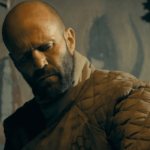Review: The OA
This past summer, Netflix dropped a new series on us. “Stranger Things”, created by The Duffer Brothers, wasn’t an Emmy darling but it was at least fun and exciting; the perfect blend of “Goonies”-eqsue 80’s fueled nostalgia that never bordered on camp. It was released with barely any notice and it went on to be one of the top obsessions of 2016.
This past week, Netflix did the same thing but with a more questionable result. “The OA”, created by Brit Marling and Zal Batmanglij, is an eight-episode sci-fi drama series about an adopted blind girl who goes missing then returns mysteriously — with her sight returned.
On the surface you can say that at least it sounds interesting. That it does, but some major polished-over flaws simply doom it.
The story of Prairie Johnson, aka “The OA”, starts off as a bit of an SVU episode. She’s first visited in a hospital bed by her adopted mother Nancy (Alice Krige) who is shocked she can see again. Their small town is rocked by the sudden return, including a random group of students at the local high school.
A bunch of semi-random events lead to Prairie getting the interest of a rag-tag group of students and a teacher who are dying to hear her story. The series uses extensive flashbacks to fill in the details: as the young Nina living in Russia, Prairie had a near-death experience that made her lose her sight. After her father sends her to school in America, he passes, leaving her to live with her Aunt who runs an adoption agency. It’s soon she catches the eye of Nancy and Abel (The Walking Dead’s Scott Wilson) who rename her Prairie and bring her into their home.
Prairie’s new found life in suburbia isn’t all glamorous. She’s riddled with night terrors and random sleep-walking, and longs to return to her father who she feels is still alive. Her restlessness leads to a solo trip to NYC, where she meets Dr. Hap (Jason Issacs). This leads to her capture and encounter with four other like-minded individuals: including former jock Homer, whom Prairie becomes close with.
From here the series basically splits: there’s the flashback story of Prairie’s capture, and then there’s the lives of her new following in the suburbs. You have the troubled kid, the poor kid, the trans kid, and of course the random “authority figure” adult played by The Office’s Phyllis Smith.
“The OA”’s subject matter puts it more in the spiritual side of sci-fi but is still sci-fi; it’d be easy to plunk this show down in the hodgepodge that is Syfy’s lineup. But it fails to become anything great or even good. The current day story with the following isn’t that interesting. The characters grate or fail to connect emotionally; I had a hard time really caring about them. And the flashback story requires a lot of suspension of disbelief, and despite one jaw-dropping scene in the fifth episode, it still drags. Add in that there’s no levity from say, some sort of humor, makes the show even harder to swallow.
A better version of all this would turn more frustrating and/or infuriating following the finale. I won’t give it away, but let’s say a lame twist and a ham-fisted final scene tend to make a mockery of everything that came before it. It’s also strange how off-key it is compared to the other episodes. It feels like someone else came in to wrap everything up.
Ultimately, “The OA” isn’t a sure-fire surprise in the vein of “Stranger Things”. It isn’t even binge-worthy. The best way to put it is if “Mad Men” or “Breaking Bad” (or hell, even “Stranger Things”) seem like an excellent college thesis then “The OA” seems like a creative writing essay. Only the final chapter was completed 15 minutes before class.



